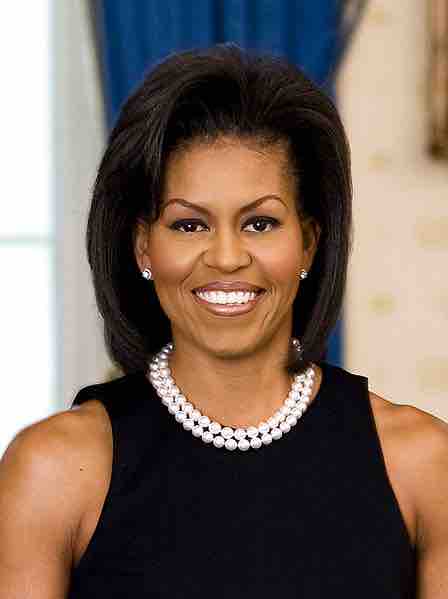Introduction
The First Lady of the United States is the hostess of the White House. This position is traditionally filled by the wife of the President of the United States. The current First Lady is Michelle Obama , wife of President Barack Obama. At present, there are four living former first ladies: Rosalynn Carter, wife of Jimmy Carter; Barbara Bush, wife of George H. W. Bush; Hillary Rodham Clinton, wife of Bill Clinton; and Laura Bush, wife of George W. Bush .

Four First Ladies
Laura Bush and former first ladies, from left, Rosalynn Carter, then-Senator Hillary Clinton, and Barbara Bush, at the dedication ceremony for the William J. Clinton Presidential Center and Park in Little Rock, Arkansas, November 18, 2004.

Michelle Obama
Michelle Obama, official White House portrait.
Origins of First Lady
The use of the title First Ladyto describe the spouse or hostess of an executive began in the United States. In the early days of the United States, there was not a generally accepted title for the wife of the president.
The earliest known written evidence of the title is from the November 3, 1863, diary entry of William Howard Russell, in which he recalled gossip about "the First Lady in the Land," referring to Mary Todd Lincoln. The title first gained nationwide recognition in 1877, when newspaper journalist Mary C. Ames referred to Lucy Webb Hayes as "the First Lady of the Land" while reporting on the inauguration of Rutherford B. Hayes. The frequent reporting on the activities of Lucy Hayes helped spread use of the title outside Washington. A popular 1911 comedic play by playwright Charles Nirdlinger, titled The First Lady in the Land, popularized the title further. By the 1930s it was in wide use. Use of the title later spread from the United States to other nations.
Roles of First Lady
The position of the First Lady is not an elected one, carries no official duties, and receives no salary. Nonetheless, first ladies have held a highly visible position in U.S. government. The role of the First Lady has evolved over the centuries. She is, first and foremost, the hostess of the White House. She organizes and attends official ceremonies and functions of state either along with, or in place of, the president.
Over the course of the 20th century it became increasingly common for first ladies to select specific causes to promote, usually ones that are not politically divisive . It is common for the First Lady to hire a staff to support these activities. Lady Bird Johnson pioneered environmental protection and beautification; Pat Nixon encouraged volunteerism and traveled extensively abroad; Betty Ford supported women's rights; Rosalynn Carter aided those with mental disabilities; Nancy Reagan founded the Just Say No drug awareness campaign; Barbara Bush promoted literacy; Hillary Rodham Clinton sought to reform the healthcare system in the U.S.; and Laura Bush supported women's rights groups and encouraged childhood literacy. Michelle Obama has sought to tackle childhood obesity.

First Ladies at Ronald Reagan Presidential Library
First Ladies Nancy Reagan, Barbara Bush (standing, left to right), Lady Bird Johnson, Pat Nixon, Rosalynn Carter, and Betty Ford (seated, left to right) at the dedication of the Ronald Reagan Presidential Library, November 1991.
Office of the First Lady
The Office of the First Lady of the United States helps the First Lady carry out her duties as hostess of the White House, and is also in charge of all social and ceremonial events of the White House. The First Lady has her own staff that includes the White House Social Secretary, a chief of staff, a press secretary, a chief floral designer, and an executive chef. The Office of the First Lady is an entity of the White House Office, which is part of the Executive Office of the President.